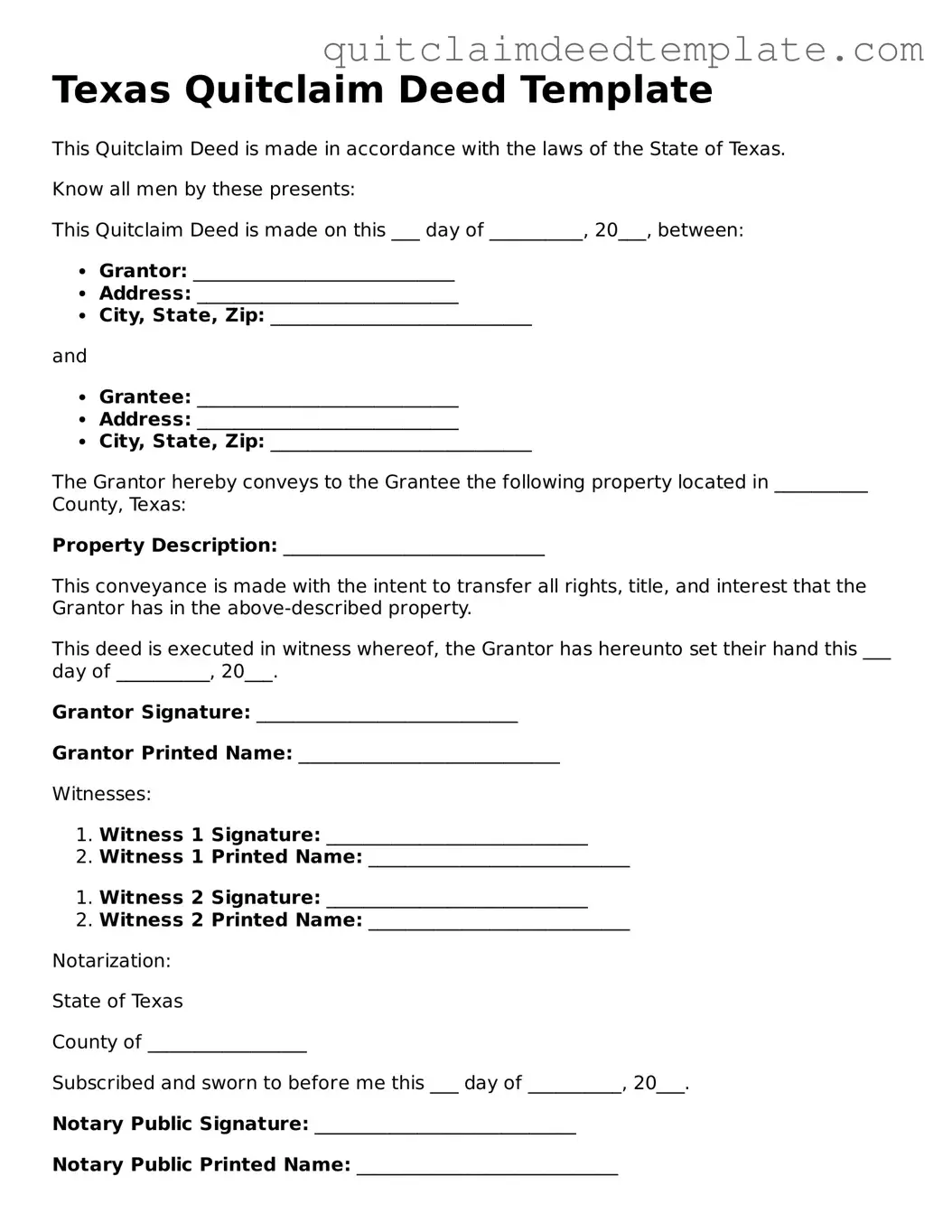Documents used along the form
When preparing to execute a Texas Quitclaim Deed, several other forms and documents may be necessary to ensure a smooth transfer of property. Each document serves a specific purpose and helps clarify the transaction. Below is a list of commonly used forms that accompany a Quitclaim Deed.
- Property Transfer Tax Form: This form is used to report the transfer of property and may be required by local taxing authorities. It helps ensure that any applicable taxes are properly assessed.
- Affidavit of Heirship: This document establishes the rightful heirs of a deceased property owner. It is particularly useful when transferring property without a will.
- Title Commitment: A title commitment outlines the terms under which a title insurance policy will be issued. It provides information about the property’s title status and any liens or encumbrances.
- Warranty Deed: This form offers a stronger guarantee than a Quitclaim Deed. It assures the buyer that the seller holds clear title to the property and has the right to sell it.
- Power of Attorney: This document allows one person to act on behalf of another in legal matters, including property transactions. It can be essential if the seller cannot be present to sign the Quitclaim Deed.
- Real Estate Purchase Agreement: This contract outlines the terms of the sale, including the purchase price and any contingencies. It serves as a foundation for the property transfer process.
- Notice of Transfer: This form notifies local authorities and relevant parties about the change in property ownership. It can help prevent disputes and clarify ownership records.
Having these documents prepared and organized can facilitate the property transfer process. Each form plays a vital role in ensuring that all legal requirements are met, providing peace of mind during the transaction.
